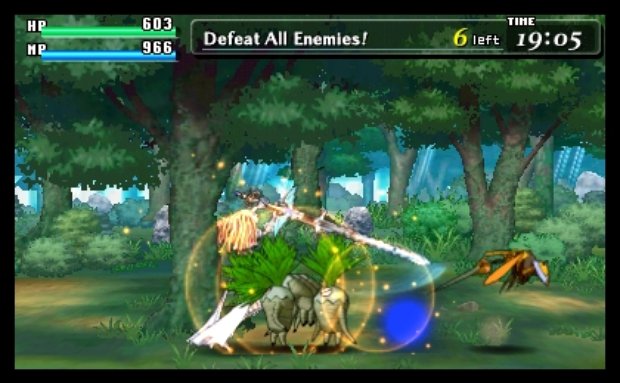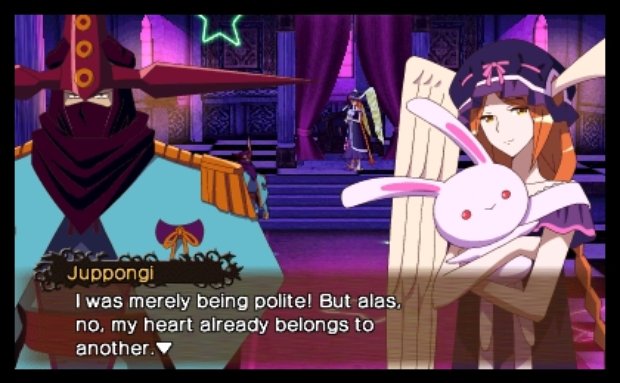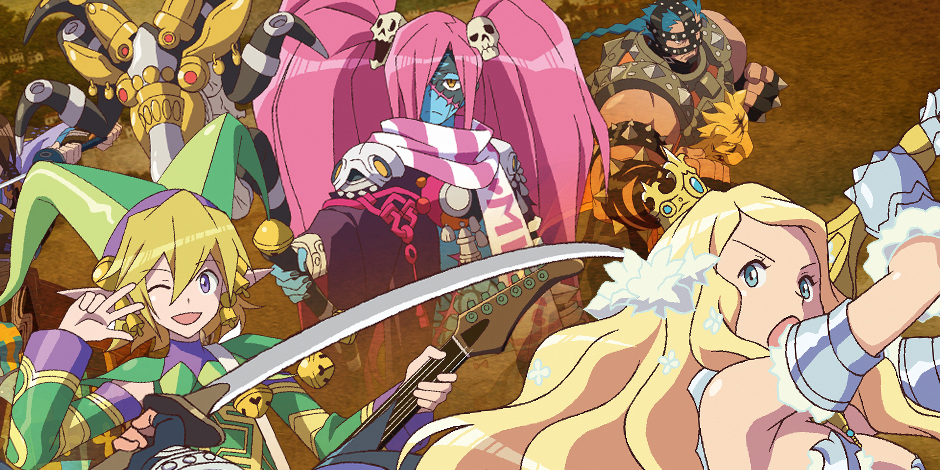GamesRadar+ Verdict
Pros
- +
Satisfying combat
- +
Lots of missions to complete and armor to collect
- +
Funny dialogue
Cons
- -
Missions can get repetitive
- -
Slowdown during large battles
- -
Getting ganged up on by enemies
Why you can trust GamesRadar+
In a year full of 3DS blockbusters, it’s easy to see why Code of Princess might slip past most people’s radars. A spiritual sequel to the cult classic Sega Saturn title Guardian Heroes, COP doesn’t exactly carry the same name recognition as Mario or Mickey Mouse, but its unique blend of action and role-playing makes it another solid addition to the console’s library, particularly if you’re a fan of RPGs or beat-‘em-ups.
The game takes place in the kingdom of DeLuxia. After an uneasy peace with monsters, which have lived and prospered alongside mankind since the beginning of recorded history, the beasts rise up against humans in a violent war. Worse yet, the Distron army has seized this opportunity to attack DeLuxia, ousting the royal family and forcing Princess Solange, the first of the game’s eight playable heroes, into hiding. She must restore order to the land, amassing a rag-tag team of would-be heroes to help her drive the Distron forces out of the kingdom before they can use her divine blade, the DeLuxcalibur, for their own sinister purposes.
It’s a fairly standard tale, with characters that fall into the expected anime archetypes, but it’s nevertheless an enjoyable one thanks to its clever localization. The dialogue can be very funny, particularly the banter between your party members (anything that Allegro the bard sage says is sure to elicit a smile), and the voice acting is perfectly suited to each character’s personality, helping bring the over-the-top writing to life.
COP’s gameplay, however, is far more original. The title can best be described as a beat-‘em-up by way of a fighting game; each mission takes you through a side-scrolling stage filled with enemies to defeat, but your characters control as they would in a traditional fighting game, with their own dedicated movesets to learn and master. There are also a number of RPG elements woven into the design; completing a mission, for instance, awards you with XP, which in turn increases your level and allows you to allocate skill points to specific stats. You can also outfit your characters with all manner of weapons and accessories, adding a nice level of customization to the game. None of these changes are reflected in their appearance, which is a slight disappointment considering that’s half the appeal of this feature, but there is enough variety in the equipment to keep you constantly tinkering with your character build.

It’s the melding of role-playing and fighting sensibilities with a beat-‘em-up framework that really makes COP such an enjoyable experience. The individual movesets for each hero gives the game a layer of depth that most beat-‘em-ups lack, and it feels incredibly rewarding to learn the ins and outs of your favorite character. Likewise, the Burst mechanic, which gives you a boost in strength at the expense of your MP, adds a nice element of strategy to the game. Knowing when to employ it and for how long makes battles as much a cerebral affair as a visceral one, and you’ll need to master this mechanic if you hope to survive some of the game’s later stages.
As fun as COP is, however, there are a few nagging issues that weigh the experience down. While the game starts off easy enough, later missions can get quite frustrating, in part because they overwhelm you with enemies. You’ll often find yourself facing larger and larger groups of foes, who waste no time in surrounding you and juggling you back and forth. There are also some instances of slowdown during your battles, particularly when the screen is filled with enemies. These issues aren’t as severe as they may initially sound; the slowdown is never bad enough to interfere with the gameplay, and COP gives you the option of teaming with friends, either locally or through Wi-Fi, to tackle some of its harder chapters. Still, they are noticeable just the same, which may be enough to turn some people away from the title.

COP can also get pretty repetitive. Each mission in the game effectively boils down to clearing a stage of enemies, which can grow quite tedious when you’re fighting many of the same adversaries throughout your adventure. One mission, for example, has you fight your way through a cemetery to stop a large skeletal warrior, only for you to fight through it again when the skeleton is revived in the following mission. The game does occasionally try to inject some variety into your quests--certain missions will task you with protecting a civilian character or surviving an onslaught for a specific amount of time--but even these feel largely the same as the others. Fortunately, the core gameplay is satisfying enough to keep you engaged in the experience, but those with less patience may grow bored of the constant grind needed to clear some of its stages.
Even with these blemishes, Code of Princess is still a solid game for the 3DS. Its marriage of role-playing and fighting elements with the traditional beat-‘em-up framework adds a satisfying layer of depth to the genre, and the ability to play co-operatively or competitively with your friends helps stave off some of the repetition of its missions. It may not be the biggest release of the year, but that doesn’t mean it’s any less worthy of your attention.
More info
| Genre | Role Playing |
| Description | Code of Princess an action RPG brawler for Nintendo 3DS with cooperative and competitive multiplayer. |
| Platform | "3DS" |
| US censor rating | "Teen" |
| UK censor rating | "" |
| Release date | 1 January 1970 (US), 1 January 1970 (UK) |



